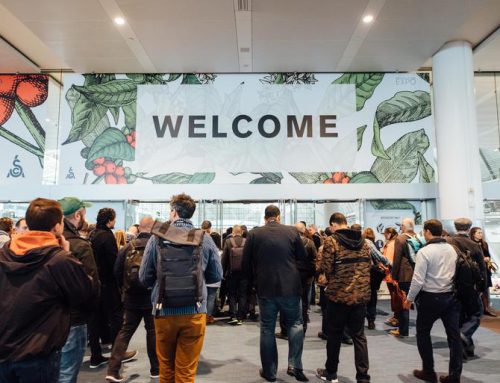Peruvian Coffee does not always get the attention it deserves. The country tends to get overshadowed by its bigger neighbors, Colombia & Brazil. But Peru is a coffee powerhouse in its own right. Peru is the world’s 5th largest producer of Arabica coffee and it is gaining in popularity.
The thin air, soaring altitudes, and fertile soil throughout Peru come together to form a breathtaking environment where coffee thrives. But sharing a border with the largest coffee-producing nation in the world is not easy. While Brazil’s efficiency and price points are unmatched, Peru finds its footing in differentiation and variety, making every harvest on Genuine Origin’s Peru portfolio something to look forward to.
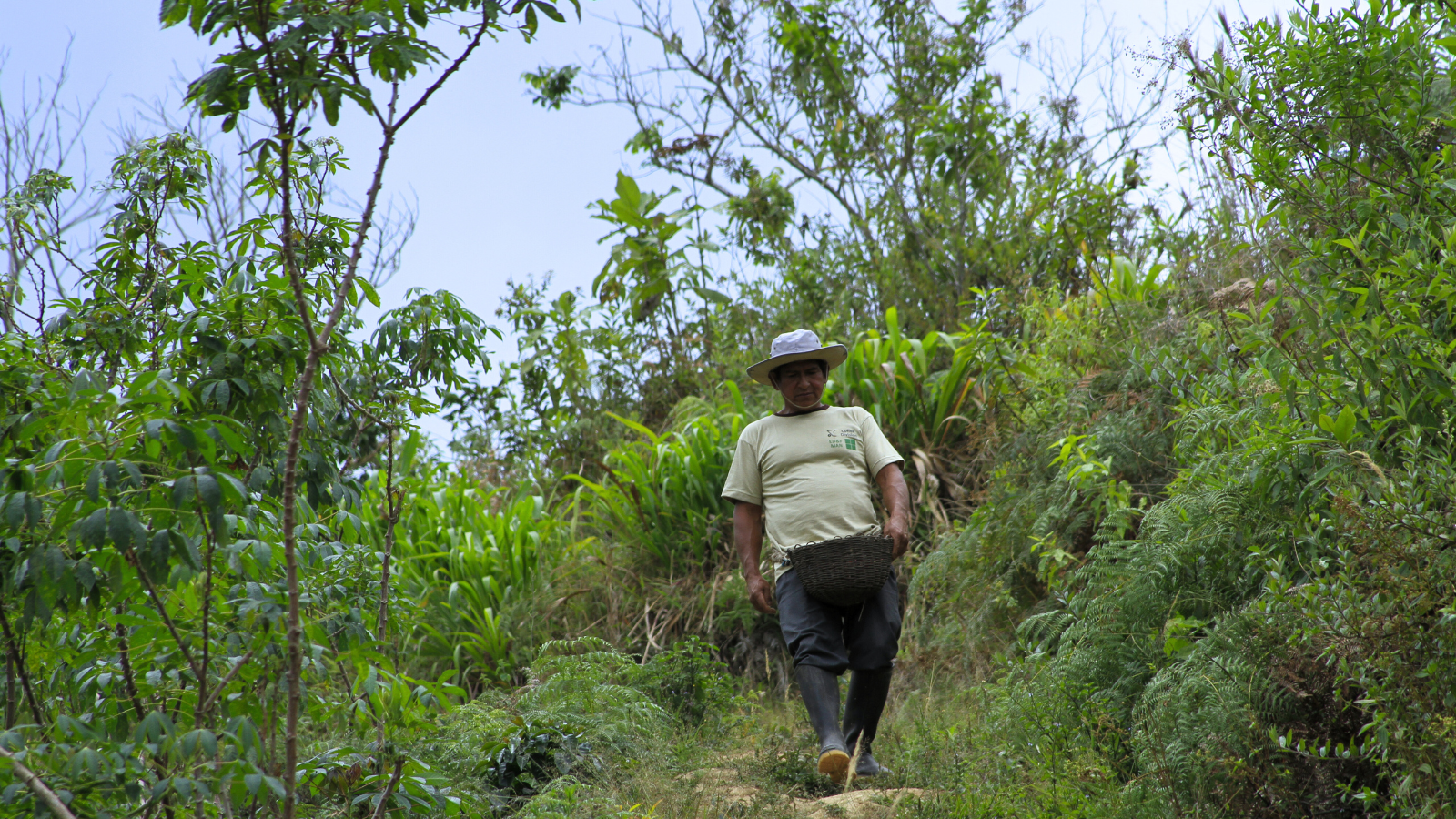
Peruvian coffee farmer on mountainous coffee farm
Peruvian Coffee History
Coffee has been part of Peruvian culture since the 1700s, but production was kept for local consumption for nearly 200 years. It wasn’t until the late 1800s, when coffee leaf rust decimated Arabica crops in Indonesia , that Peru began ramping up coffee production for export.
This was catalyzed in the early 20th century when Peru defaulted on a loan from the British government, resulting in the transfer of 2 million hectares of Peruvian land to England as compensation. Part of that land was used for increasing agricultural exports. Other European powers also invested heavily in coffee production in Peru until the two World Wars weakened their colonialist potency, spurring them to sell off lands throughout Latin America.
In the mid-1900s, the Peruvian government redistributed land from large plantations to thousands of local farmers. This abundant fertile land was ideal for growing high-quality specialty coffee, and since then, Peru has been doing precisely that. During the post-war period, most families could generate a sufficient annual income by growing coffee on small plots, leading to a shift from plantation-led production to a smallholder majority.
With encouragement from the government via economic planning and sourcing policies, Peruvian coffee farming and organic certification, in particular, has soared. Cooperatives were established to help farmers with processing, milling, transport, and export, and they controlled 80% of Peru’s production in the 1970s. While the early cooperatives were fraught with corruption, farmers could still profit from their efforts. All of that changed in the 1980s when global coffee prices plummeted.
For nearly 20 years, the coffee industry in Peru suffered hardships on multiple fronts, including political controversies, violent civil conflicts, and deteriorating infrastructure. In 1992, after conflicts between the government and guerilla forces finally ended, the country began to stabilize.
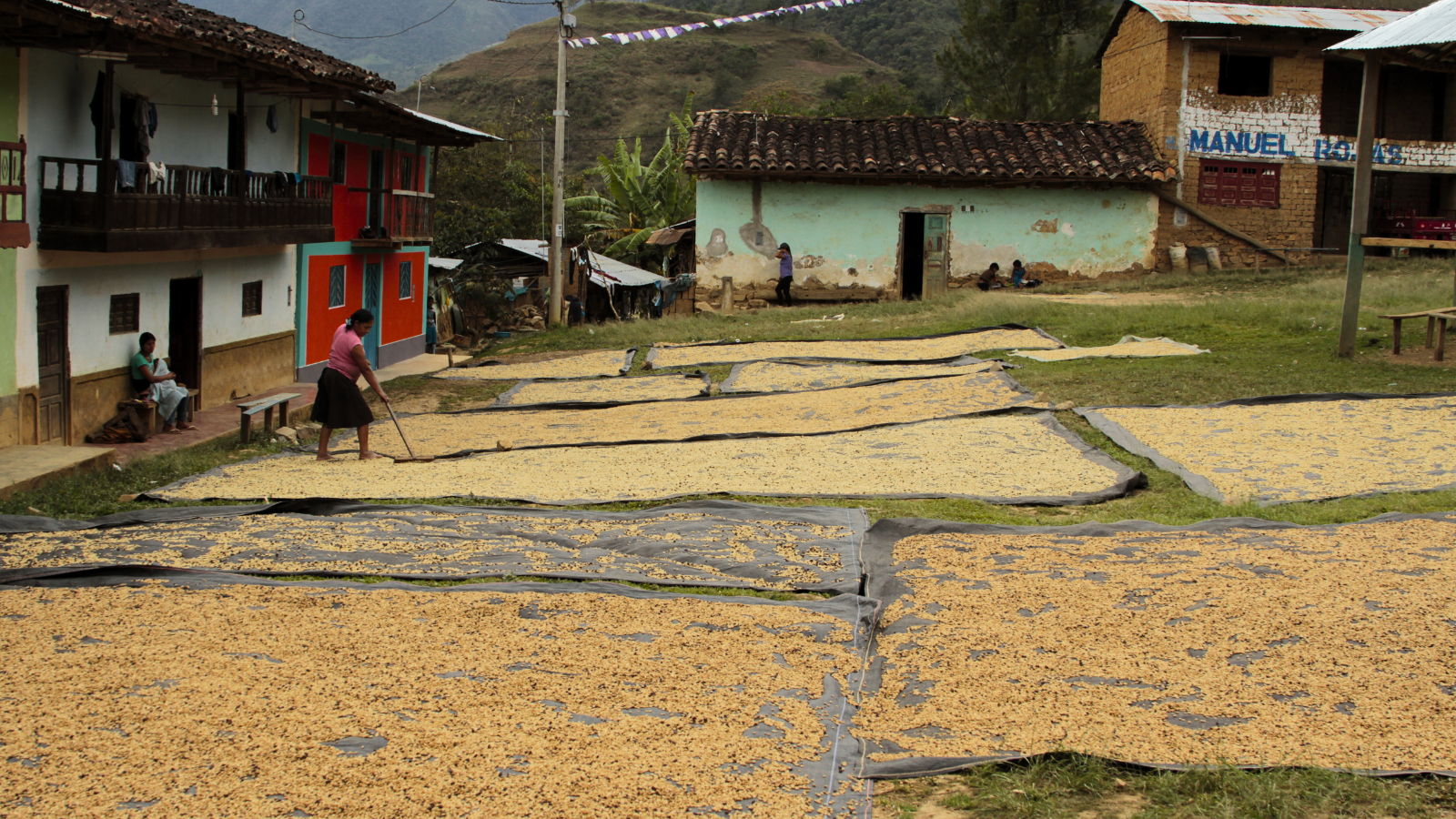
Peruvian coffee farmer raking coffee so that it dries evenly
Peruvian Coffee Production
In the 1990s, big brands shifted their sourcing direction towards fair trade, ecological, and humane coffees. Peru saw an opportunity and began investing in organic certification, which helped bring in funds to revitalize farms and infrastructure. In just ten years, coffee cultivation land grew from 163,000 hectares to 215,000 hectares in 2005. Today, 375,000 hectares are dedicated to coffee production with over 90,000 hectares certified organic.
Coffee production cuts a swath through Peru. The cash crop is grown from the northern tip to the southern tip of the country. Peru is divided into three regions: the coastal deserts along the Pacific Ocean, the Andean highlands that run throughout Central Peru, and the Amazon rainforest that borders Ecuador, Colombia, and Brazil. All three of Peru’s regions are incredibly fertile, but the lofty elevations of the Andes mountain range are ideal for high-quality Arabica production.
With two ports — Paita in the north and Callao in the south — Peru is also positioned to be flexible when it comes to shipping green coffee to the world. The coffee sector generates 855,000 jobs for Peru’s economy, and over half a million people depend on the crop for their livelihoods – including the harvest labor force. When coffee prices are low, uncertainty looms over the future for coffee farmers, but exporters like Volcafe Peru, Genuine Origin’s sister company in the region, are working to change that.
More than 75% of Peru green coffee comes from elevations above 1200masl. That’s where the signature sweetness and sparkling acidity of Peru coffee start to shine. But coffee can be found at elevations of anywhere between 800 to 2000masl. There are huge differences in quality due to the range of elevations, and Peru leverages this diversity to please more customers.
Approximately 150,000 farming families produce Peru’s four million bags of coffee each year. The USDA forecasted this volume would increase by 16 percent to 4.2 million in the 2023/2024 harvest. Most Peruvian green coffee is traditionally washed at the farm level and sold in parchment. Sometimes, farmers keep their coffee in home storage for months after harvesting, like money in the bank. They sell it only when the household needs cash for school fees and the like. Volcafe Peru is trying to change this model.
Buying cherry and milling it — as opposed to buying parchment from numerous smallholders — allows exporters to control quality. To that end, Volcafe Peru has spent years motivating farmers to sell cherries directly. The company’s seven buying units in northern and central Peru facilitate purchasing cherry. And its mill in Jaén now processes coffee for thousands of producers in the Cajamarca region.
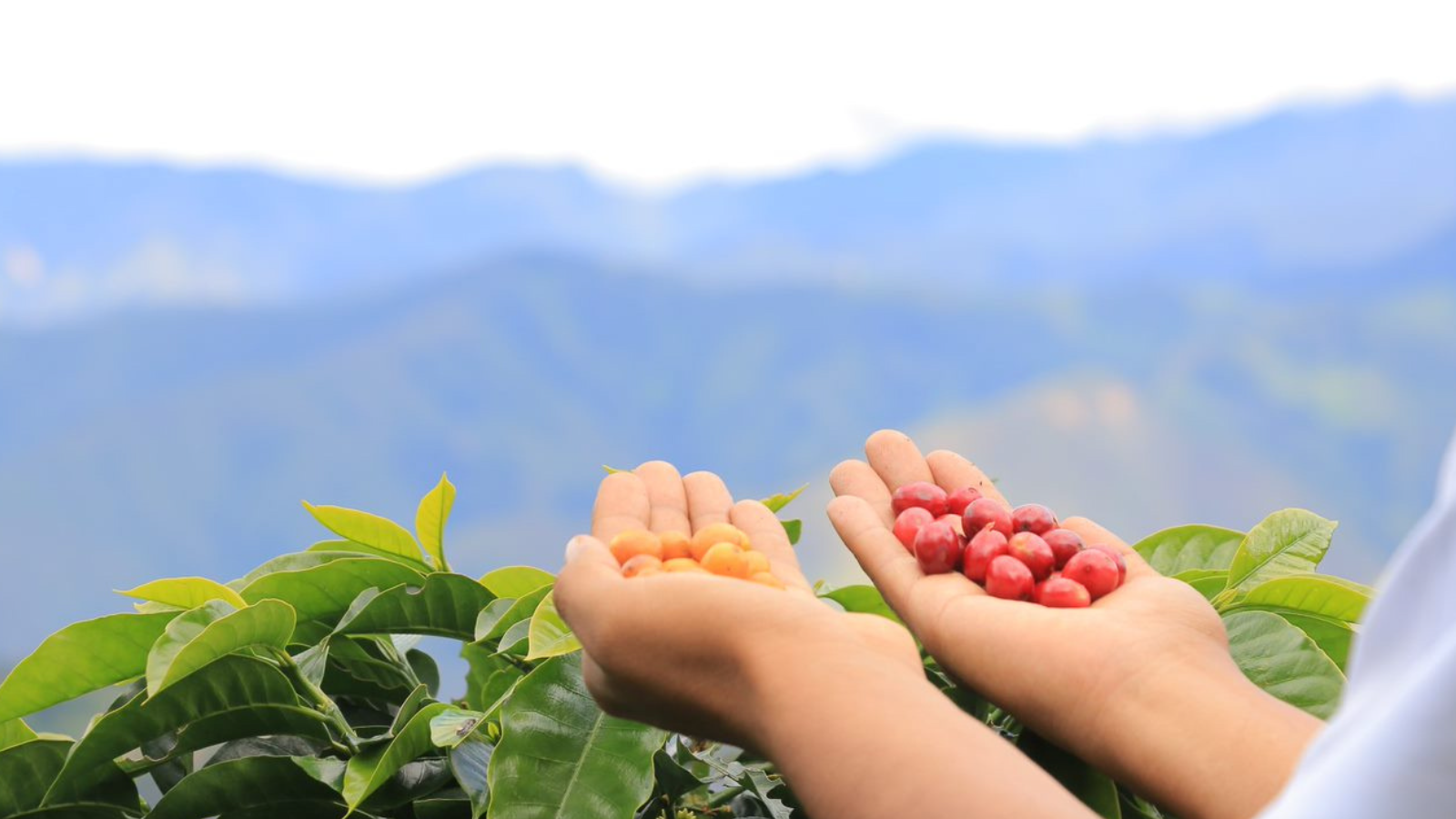
Red and yellow catuai coffee cherries
Common Peru Coffee Varieties
Nearly all of the coffee growing in Peru is Arabica. Over 70% of the production volume is the Typica variety, one of the first plants to be taken from Ethiopia for foreign cultivation. Caturra, a natural mutation of the Bourbon variety with smaller, dwarf tree sizes, makes up 20%, and other varieties like Catimor and Pache make up the last 10% of common Peru green coffee varieties.
Peru’s Green Coffee Producing Regions
Peru coffee production is concentrated along four regions: San Martín, the Amazonas, Chanchamayo (Central Highlands), and Cuzco. Chanchamayo used to produce around 70% of Peru’s total volume, but the advent of coffee leaf rust in the region shifted much of the production towards the north, which now accounts for nearly half of the total crop.
In the north, where you find Cajamarca, Jaen, San Ignacio, and San Martín, altitudes range from 900 to 2,100masl. Productivity per hectare is high in Cajamarca and San Martín, and the northern regions are famed for sweet coffees with bright acidity.
The Amazonas in the northeast are divided into seven coffee provinces with elevations that range from 900 to 2100masl. The cup profile of Peru Amazon coffee consists of dried fruit, caramel, and candy, with a balanced body and acidity.
The Central Highlands of Chanchamayo are spread across 1500 to 2400masl and are part of the larger region of Junin. The fruit-forward coffees that grow here are filled with notes fresh fruit, intense acidity, a creamy body, and good balance, like this Minca certified organic washed coffee.
Although Cuzco in the south is still an up-and-coming region, the microclimate there at 900 to 2000masl creates delicious notes of red fruit and chocolate in the cup.
Northern regions such as Jaen and San Ignacio are growing in importance. Quality is improving, and farms are becoming more productive, so Volcafe Peru’s new Jaén mill is strategically important. In addition to parchment drying, the mill has also installed solar dryers that are free of charge for Volcafe Way producers. The intention is to demonstrate Volcafe’s commitment to its producer partners; it also has a tangible impact on quality and efficiency.
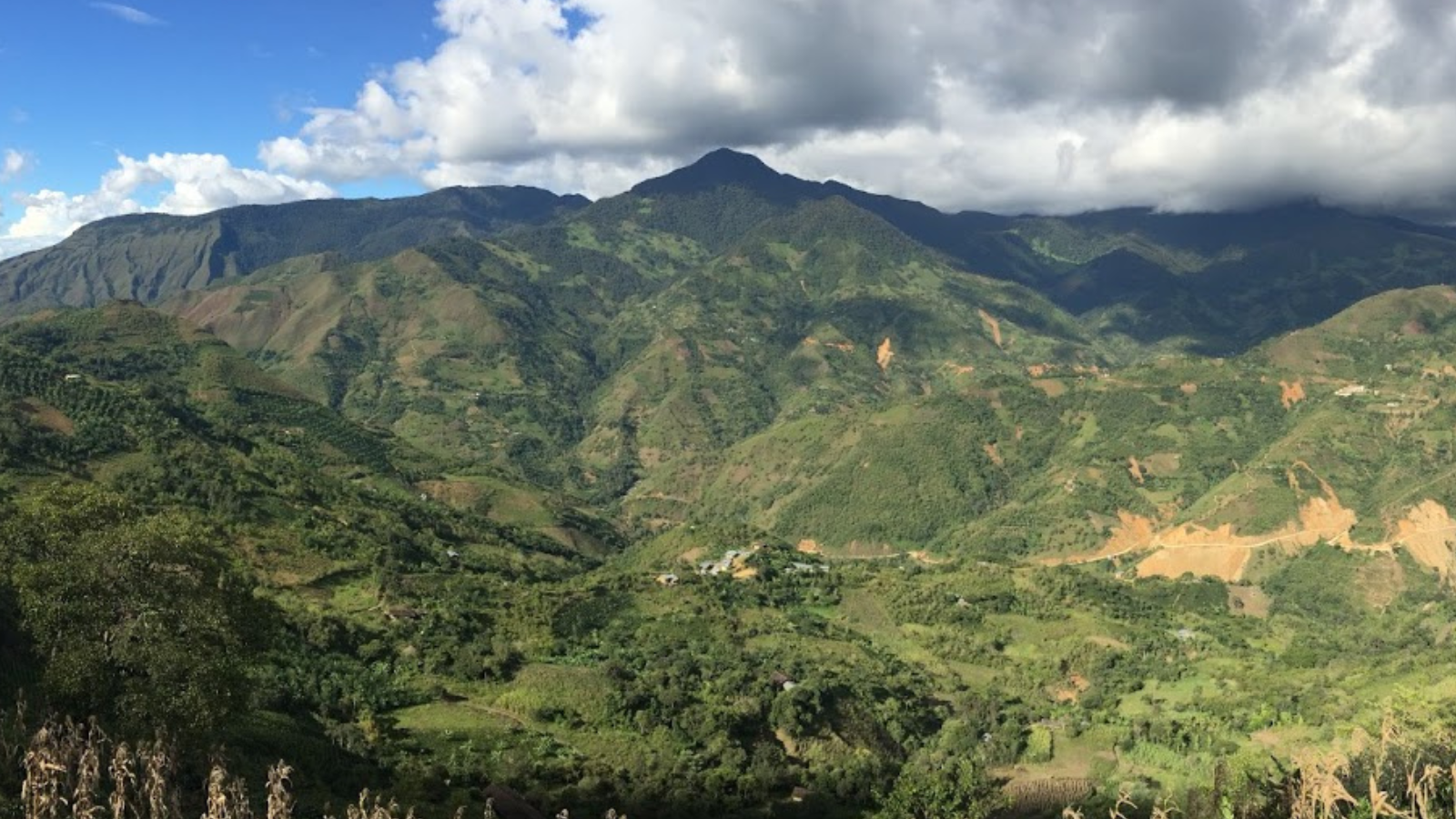
Peru mountains and coffee farms
Quality Peru Green Coffee
Coffee in Peru is graded based on the altitude at which it was grown, similar to the grading systems of other Latin American countries like El Salvador or Nicaragua. However, instead of Strictly High Grown (SHG), high-quality Peru coffee is marked as Strictly Hard Bean (SHB). SHB Peru green coffee grows above 1350masl.
Coffee that grows between 1200 and 1350masl is designated as Hard Bean (HB). In addition to altitude standards, organic coffee in Peru is certified under the following certifications: Fair Trade, Certified Organic under USDA or Japanese Agricultural Standards (JAS), Rainforest Alliance, Starbucks Café Practices, and other recognitions in bird-friendly coffee.
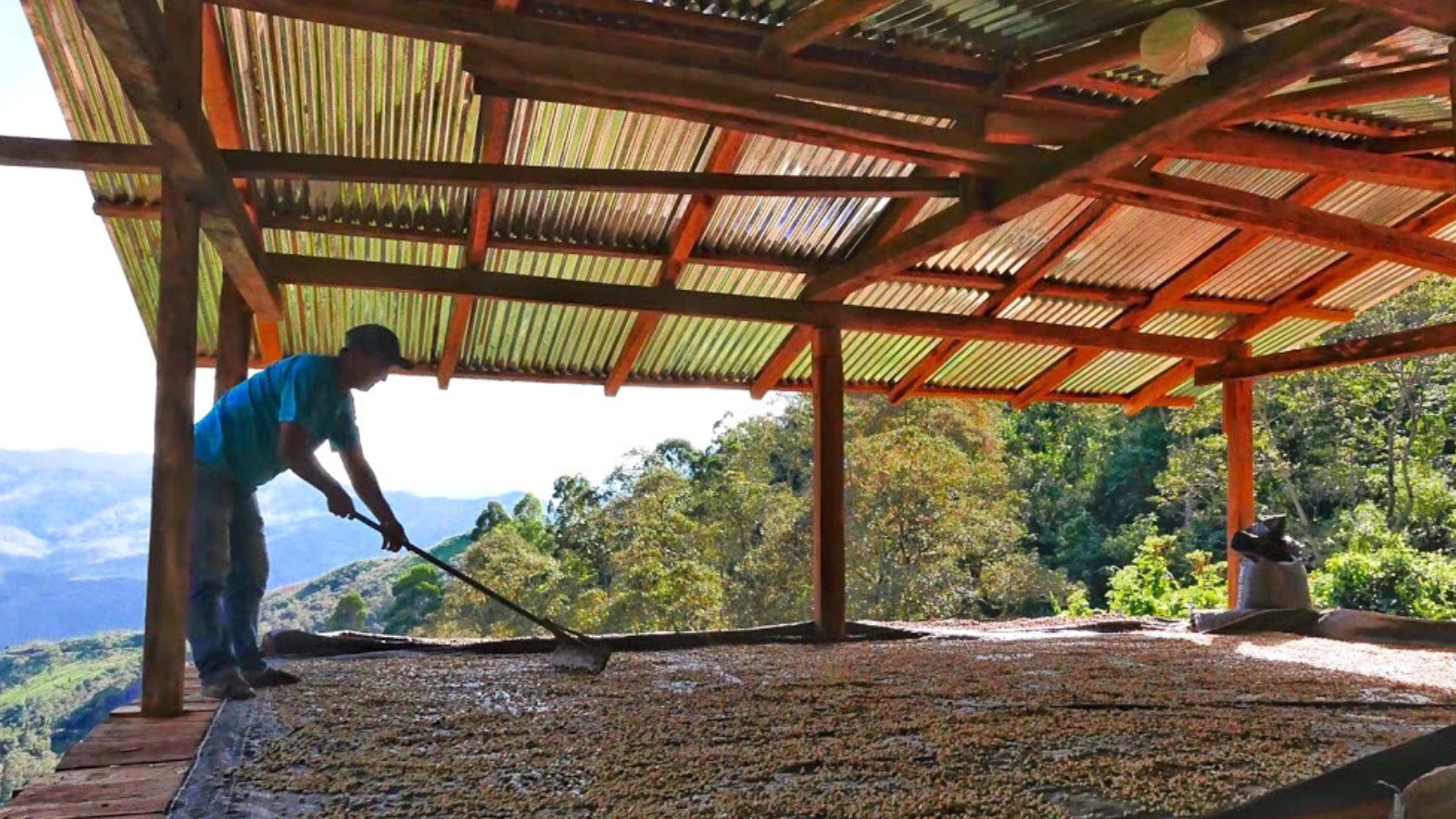
Peruvian coffee farmer raking coffee on top of mountain farm
Organic Peruvian Coffee
While Peru is the top exporter of fair trade and certified organic coffee, the question of sustainability is much more complex than ticking the right boxes. Whereas Volcafe Peru works with all of the certification seals, it recognizes that the seals are not a cure-all.
Organic farming can leave crops vulnerable to disease and pestilence. A prime example: in 2011, organic farms in Peru were overwhelmed by leaf rust. With farms still struggling to make a comeback after the outbreak, the future of organic farming in Peru is uncertain.
The question is: How do you make organic sustainable? Organic farms tend to have lower yields than farms that use conventional fertilizers — but generally, the end customer will not pay the premium to make up the difference. Finally, the transition alone from a basic farm to an organic one takes three years of downtime, something that many farmers — the ones that truly need the most assistance — cannot afford to take on.
Volcafe Peru draws on a deep evaluation of farms to understand how they can make the most impact. All efforts are invested into making coffee production sustainably profitable year after year. That includes improving farming methods — organic or otherwise — to reach sustainable levels as well. This is why Volcafe Peru is adapting the Volcafe Way methodology to organic farms.
Genuine Origin in Peru
Since 2014, Volcafe Peru has been going the extra mile to ensure its producer partners are sustainably profitable.
Volcafe Peru operates on three pillars: quality, sustainability, and loyalty. With the addition of Volcafe Way ideology, they have further organized their efforts to maximize impact and produce premium-level coffee. Lowering and controlling costs for farmers is key to what they’re doing, and by raising prices for better quality, they are building producer loyalty to the brand.
Over 3,500 farmers are participating in the Volcafe Way program in Peru, and the company commits an annual investment of USD1.26 million in three major producing regions. Volcafe Peru’s work aims to transform basic farms into premium farms through technical intervention, capacity building, and performance monitoring that adds up to an evaluation system for farm quality. Every coffee lot from Peru at Genuine Origin is sourced from a Volcafe Way producer.
But Volcafe Peru doesn’t stop there. Seven years ago, they began working on a “Cluster” concept. In Clusters, Volcafe Peru developed a way to work directly with a group of farmers and a roaster. The objective was for the producers in the cluster to grow coffee exclusively for the roaster for a contracted number of years. Critical to the Cluster concept is that funds are reinvested into farm infrastructure and technical assistance. This cluster system is a true partnership with the potential for a scalable impact.
The Cluster program has helped to stabilize the supply chain for roasters and farmers while providing detailed traceability and consistent quality. It also encourages medium and long-term commitments all around. By utilizing Trackvia technology, roasters can view coffee purchase information on a daily basis, including producer details and pricing. Volcafe Peru is bringing coffee directly to the market with full transparency from field to FOB contract, bolstering the roaster’s ability to see how much value is added through the fieldwork.
We’re looking forward to more coffees from Peru that are incredibly sweet, underlined by a sparkling acidity from cherries nourished by time, patience, and care. Coffee is still a national priority for Peru, both as an international export and for national consumption, and we’re excited to see what’s in store for an origin that’s weathered so much yet continues to grow even stronger every year.
Find more about our Peru green coffee collection at Genuine Origin’s Peru portfolio on our website: https://www.genuineorigin.com/peru.




